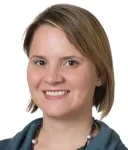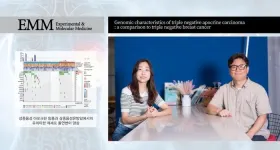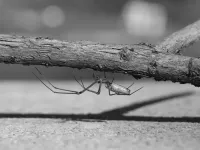(Press-News.org) WASHINGTON — Most coastal communities will encounter 100-year floods annually by the end of the century, even under a moderate scenario where carbon dioxide emissions peak by 2040, a new study finds. And as early as 2050, regions worldwide could experience 100-year floods every nine to fifteen years on average.
A 100-year flood is an extreme water level that has a 1% chance of being exceeded in any given year and is based on historical data. Despite the name, 100-year floods can strike the same area multiple years in a row or not at all within a century. But a new study finds that those historical trends will no longer provide an accurate outlook for future floods.
“The threshold that we expect to be exceeded once every hundred years on average is going to be exceeded much more frequently in a warmer climate until they are no longer considered 100-year events,” said Hamed Moftakhari, a civil engineer and professor at the University of Alabama who supervised the project. The study was published in Earth’s Future, AGU’s journal for interdisciplinary research on the past, present and future of our planet and its inhabitants.
On the coast, extreme floods can be caused by water pushed inland by storms, tides and waves, but this study focuses on a component that contributes to flooding over a much longer time scale — sea level rise. As higher seas creep up the shore, coastal infrastructure will be closer to the water, making storms, tides and waves more likely to impact communities.
The researchers used data from more than 300 tide gauges around the world to conduct trend analyses and estimate future extreme sea levels under two carbon emission scenarios outlined by the International Panel on Climate Change: if carbon dioxide emissions continue to rise through the end of the century, and if carbon dioxide emissions reach their peak by 2040 and then decline. In both scenarios they found that sea level rise will lead to an increase in 100-year flood events in most of the locations they studied.
A proactive approach to land planning, urban development and coastal protective measures could help communities reduce flooding and avoid disaster, Moftakhari said, and that starts with realistic forecasts of future coastal conditions.
Building a safer future
Engineers who design structures such as sea dykes, seawalls and breakwaters to protect communities from these extreme floods rely on a concept known as stationarity to predict future water levels.
“In stationarity, we assume that the patterns we have observed in the past are going to remain unchanged in the future, but there are a lot of factors under climate change that are modulating these patterns,” said Moftakhari. “We can’t assume stationarity in coastal flooding anymore.”
Previous studies relied on stationary estimates of extreme sea levels to predict 100-year floods, but this study used non-stationary methods and found that the shift in extreme sea levels will not be uniform for many tide-gauge locations.
As the climate changes, warmer ocean temperatures and meltwater from glaciers are causing sea levels to rise, increasing the frequency and severity of coastal flooding. As a result, engineers need accurate estimates of future flood risk that don’t assume our changing future will reflect historic coastal patterns.
“What makes it so challenging is that the majority of tools, design guidelines, manuals of practice and more are all based on the assumption of stationarity,” said Moftakhari. “They need to be updated to enable us to keep pace with the rate of change.”
More than 600 million people live in low-lying coastal regions, according to another study. That number is expected to rise. Well-designed coastal defense structures play an important role in coastal communities' ability to withstand major flooding.
While mean sea level is rising, the outcome won’t be the same everywhere. Higher latitudes may experience a drop in sea levels as heavy ice sheets melt and the land underneath rises. Alternatively, regions like the Gulf of Mexico are experiencing rates of sea level rise that are faster than the global average because the land is gradually sinking. According to Moftakhari, coastal communities will require unique solutions based on local information to match their needs.
“We know that mean sea level is rising, the question is: how are we going to deal with it?” said Moftakhari. “We’ve already seen that many portions of the coast are permanently inundated and losing land, and many coastal cities and islands are experiencing flooding much more frequently than in the past — it’s time to learn how to deal with non-stationarity.”
But Moftakhari said he is determined to remain optimistic, reminding us that disasters are the outcome of human decision-making, not hazards alone. “Don’t forget that this is all about the level of water that we expect to experience without mitigation measures,” he said. “There will be technological advancements that could enhance the resilience of communities.”
###
Notes for Journalists:
This study is published with open access. Download a pdf copy of the paper. Neither the paper nor this press release is under embargo.
Paper title:
“Coevolution of Extreme Sea Levels and Sea-Level Rise Under Global Warming”
Authors:
Hamed Moftakhari (corresponding author), University of Alabama, Tuscaloosa
Georgios Boumis, University of Alabama, Tuscaloosa
Hamid Moradkhani, University of Alabama, Tuscaloosa
***
AGU (www.agu.org) is a global community supporting more than half a million advocates and professionals in Earth and space sciences. Through broad and inclusive partnerships, AGU aims to advance discovery and solution science that accelerate knowledge and create solutions that are ethical, unbiased and respectful of communities and their values. Our programs include serving as a scholarly publisher, convening virtual and in-person events and providing career support. We live our values in everything we do, such as our net zero energy renovated building in Washington, D.C. and our Ethics and Equity Center, which fosters a diverse and inclusive geoscience community to ensure responsible conduct.
END
A new study from North Carolina State University and Duke University offers insights into the ways that education, work and motherhood shape the lives of women in the United States. In a longitudinal study of more than 8,100 women, the researchers found seven “pathways” that illustrate the way major life events can have long-term ripple effects.
“Our goal here was to examine how family, work and education influence each other in the lives of women, rather than viewing education as a separate process from work and family,” says Anna Manzoni, co-author of a paper on the study and an associate professor of sociology ...
“Cosmologists believe that only about 20% of the total matter is made of regular or ‘baryonic’ matter, which includes stars, galaxies, atoms, and life,” explains first author Dr. Mohamed Abdullah, a researcher at the National Research Institute of Astronomy and Geophysics-Egypt, Chiba University, Japan. “About 80% is made of dark matter, whose mysterious nature is not yet known but may consist of some as-yet-undiscovered subatomic particles.” (Fig. 1)
“The team used a well-proven technique to determine the total amount of matter in the universe, ...
The University of Chicago will launch a pioneering new center aimed at shifting the popular narrative around the physical and cognitive impacts of aging.
Headed by leading neuroscientist Emily Rogalski, PhD, the new University of Chicago Healthy Aging & Alzheimer's Research Care (HAARC) Center will focus on building deep multidisciplinary expertise and bridging the gap between scientific disciplines to accelerate breakthroughs in cognitive resilience.
“We want to increase awareness and the scientific probability ...
IIASA is proud to announce the launch of its Flagship Report, "Systems Analysis for Sustainable Wellbeing. 50 Years of IIASA Research, 40 Years After the Brundtland Commission, Contributing to the Post-2030 Global Agenda” on Wednesday, 13 September 2023 at an official UN event in the framework of the 78th session of the UN General Assembly and the Sustainable Development Goals mid-term review.
The IIASA Flagship Report chronicles the extraordinary 50-year journey of IIASA, a globally renowned institute providing systems analytical expertise on complex global challenges. Co-sponsored by the Permanent Missions of Austria and South Africa ...
Washington, September 13, 2023—The United States has the largest age gap in voter turnout among advanced democracies. Youth voter turnout remained low, at 48 percent, in 2020. Scholars, educators, and policymakers often recommend civic education as a solution to low youth voter turnout.
However, new research finds that a commonly used state-mandated civics test policy—the Civics Education Initiative (CEI)—does not improve youth voter turnout, at least in the short term. The study, by Jilli Jung and Maithreyi Gopalan, both at Pennsylvania State University, was published today in Educational ...
Breast cancer research takes a significant stride forward as Professor Semin Lee and his research team from the Department of Biomedical Engineering at UNIST, in collaboration with Professor Ji-Yeon Kim and Professor Young-Hyuck Im from the Division of Hematology-Oncology at Samsung Medical Center in Seoul, delves into the exploration of triple negative apocrine carcinoma. This rare breast cancer subtype has garnered attention due to its unique genetic characteristics and improved prognosis when compared to other forms of triple-negative breast cancer (TNBC).
Triple negative ...
New research led by the Institute of Psychiatry, Psychology & Neuroscience (IoPPN) at King’s College London has found that depression and the risk of depression are linked to different inflammatory proteins in boys and girls.
When inflammation occurs in the body a host of proteins are released into the blood called cytokines. Previous research has shown that higher levels of cytokines are associated with depression in adults, but little is known about this relationship in adolescence.
Researchers investigated sex-differences in the relationship between inflammatory proteins and depression. Published in the Journal of ...
Researchers from University of Colorado Denver, Iowa State University, and Arizona State University published a new Journal of Marketing study that examines the stock market effects on these contests and the contest characteristics that may enable such contests to pay off.
The study, forthcoming in the Journal of Marketing, is titled “When Do Marketing Ideation Crowdsourcing Contests Create Shareholder Value? The Effect of Contest Design and Marketing Resource Factors” and is authored by Zixia Cao, Hui Feng, and Michael A. Wiles.
Crowdsourcing contests for marketing ideas such as new ads, graphics, and products have become quite popular ...
Sitting calmly in their webs, many spiders wait for prey to come to them. Arachnids along lakes and rivers eat aquatic insects, such as dragonflies. But, when these insects live in mercury-contaminated waterways, they can pass the metal along to the spiders that feed on them. Now, researchers reporting in ACS’ Environmental Science & Technology Letters have demonstrated how some shoreline spiders can move mercury contamination from riverbeds up the food chain to land animals.
Most mercury that enters waterways ...
DALLAS, September 13, 2023 — On Tuesday, Sept. 12, the American Heart Association, a global force for healthier lives for all, recognized 19 students, schools and educators for their commitment to end cardiovascular disease, the nation’s no. 1 killer, through the Association’s in-school programs, Kids Heart Challenge™ and American Heart Challenge™. The annual National Awards Ceremony, held virtually, was joined by program participants from coast to coast and ...



